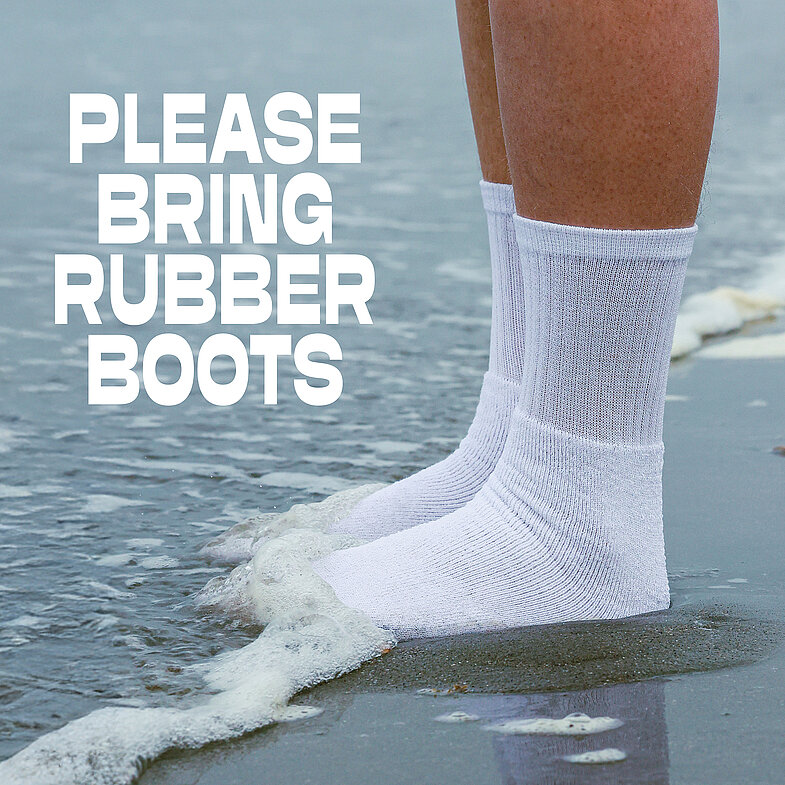
Like the noise of full public pools or cracking icebergs. Sticky dripping water ice, artificial rain, wet feet, tears in the snow, steam, fog, pippi, waves, thirst - water touches us all.
Please Bring Rubber Boots is a conceptual art exhibition about water, the most secondary, most essential thing of all. International artists present installations, video and sound works, sculptures, photographs and performances that explore the different facets and aggregate states of water, its beauty and its ecological and political implications.
Sea levels are rising and people are losing their homes. There is a lack of water - and yet it flows in abundance from our taps: Water is political.
In Please Bring Rubber Boots, visitors can immerse themselves in the emotional inner workings of a flood pump and lick the polar ice caps. It gets cheeky, thought-provoking and wet.


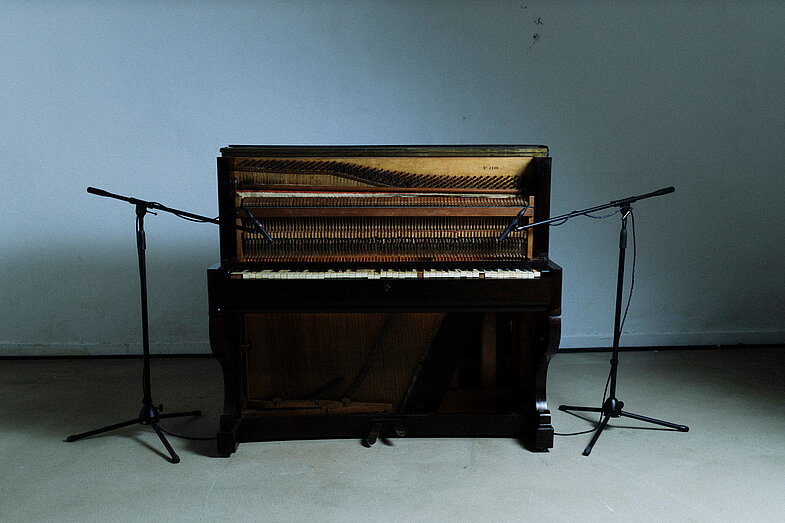
The work Iceberg 1410 consists of an old piano with a dismantled case that reveals the mechanics and strings. The instrument has been equipped with a hidden electromagnetic system controlled by a computer that moves the keys and vibrates the strings by translating environmental data on air quality and pollution into sounds in real time.
The piano used in this installation is a historically significant relic from the first generation of its kind - a piano that, despite its size and powerful yet subtle sound, appears fragile and is subject to an aging process caused by environmental conditions. Yet despite its venerable appearance, it has been forgotten for many decades. Its once sonorous sound now reveals a state of profound decay, comparable to a glacier that gradually melts, breaks up and disappears into silence.
At the opening, Alfredo Ardia will present a sound performance in which he interacts with the piano.
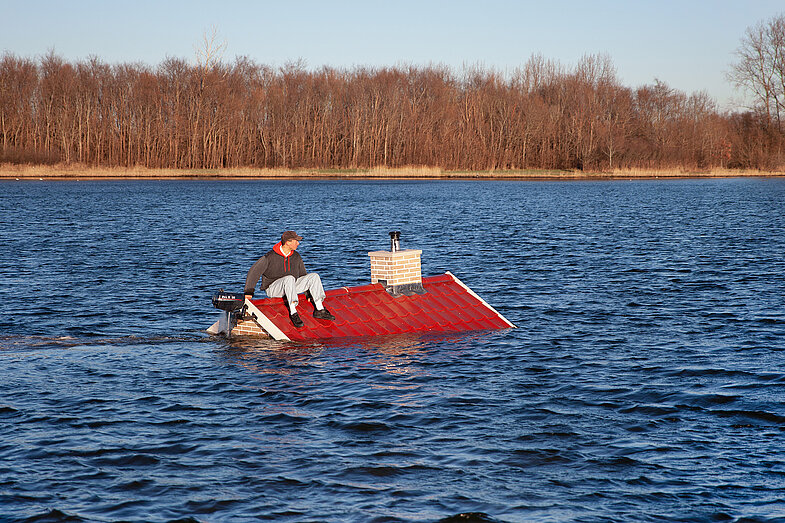
Willem de Haan’s work Motor Home was conceptualized and produced for the Watersnoodmuseum (Flood Museum) in Ouwerkerk (NL). It's a flooded house adapted to a world transformed by climate change. The sinking house is maneuvered through water with an outboard motor. Attracted by the beauty and apparent irony of the performance, one is suddenly surprised by the seriousness and urgency of the subject matter.
In his works, Willem de Haan questions and undermines the social and political rules of our immediate environment through artistic interventions. By adding convincing yet somewhat disturbing artificial elements, he playfully confronts viewers with their usual thinking patterns. In line with the artist's ambition to strictly present the Motor Home on locations that are threatened by flooding, the video documentation of the work is shown in the deep cellar of the Künstlerhaus Dortmund. This special cellar, which once served as the entrance to a coal shaft, is regularly affected by flooding and will be equipped with its own flood pump next year.
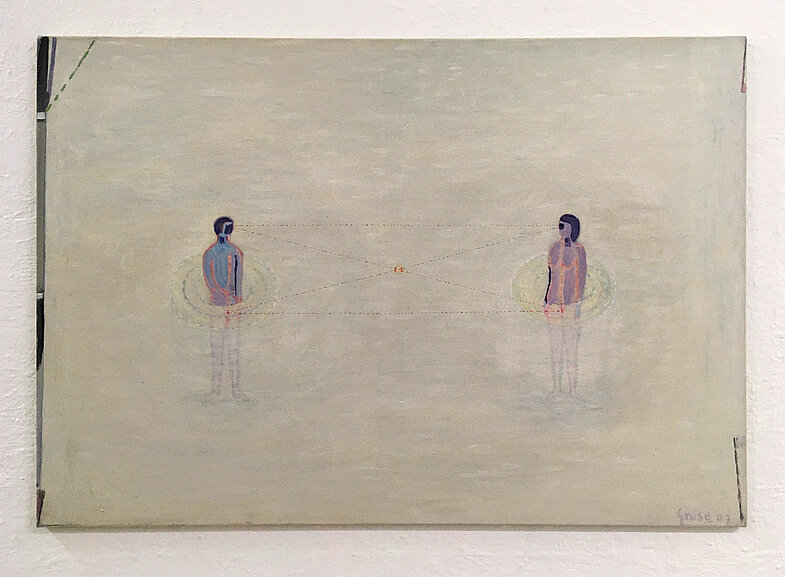
The painter and poet Krzysztof Gruse was born in Bydgoszcz (PL) in 1957. He is a co-founder of the artist group ‘Bydgoszcz School’ (1994-2015). His works can be found in the collections of the Emschertal Museum in Herne, Leon Wyczolkowski District Museum in Bydgoszcz (PL), the BWA Municipal Galleries in Bielsko-Biala and Bydgoszcz (PL) and in private ownership.
In Krzysztof Gruse's works one cannot avoid a simultaneous contradiction. This parallel state, constantly meandering between two poles and yet so human, creates a great fascination. The works make us pause, touch and are both near and far, melancholy and yet full of subtle humor. Hardly anyone articulates the feeling of being alone without being lonely and vice versa in such beautiful nuances.
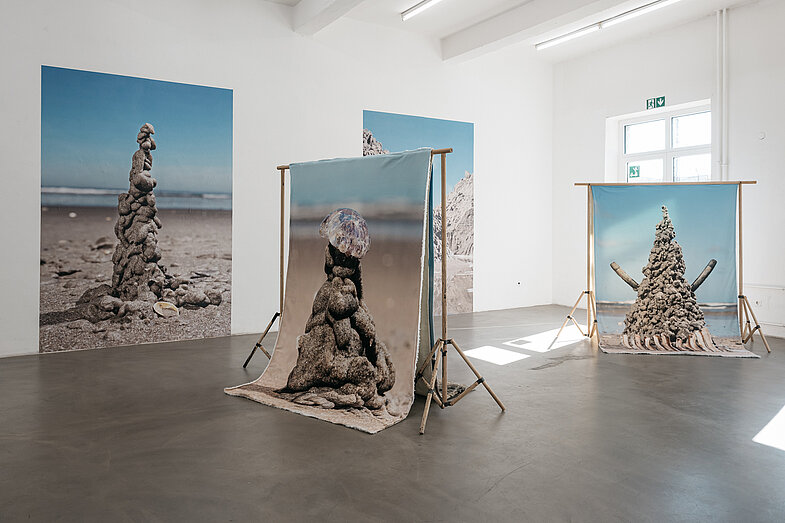
Helmut Smits has designed a new room-sized installation for the exhibition, made of light-breaking, see-through PET bottles. The clear aesthetics, the sterile, shrink-wrapped, piled-up water, can be read on many different levels. It relates to rising sea levels, a flood of microplastics and governments warning us to pile up water supplies in basements.
A snowball made of white Carrara marble lies delicately sparkling and still in the exhibition, looking like a relic from long-forgotten times in a natural history museum under its glass cover. Perhaps it is the last of its kind. Helmut Smit's works often appear cheerful and playful at first glance, but only reveal themselves to be very delicate socially critical observations on closer inspection.
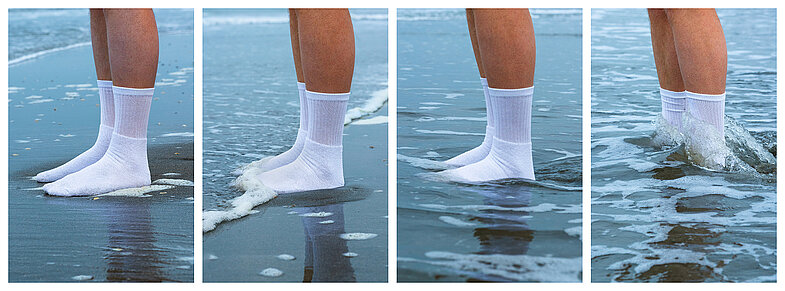
In the photo series Time To Get Wet Feet by Dutch duo Maartje & Merel, we see how two feet are slowly being swallowed up by rising seawater. The photo series serves as a diagram and shows the expected rise in sea level: it will be around 17 cm higher in 2050 than it is today. If we don't want to get our feet wet, it's time to act!
Maartje & Merel started working together during their studies at the Design Academy Eindhoven. Their projects include digging the first real underground bar in the Netherlands, transforming a car into an airplane, the design of a food forest that only grows snacks and many campaigns on many different topics.
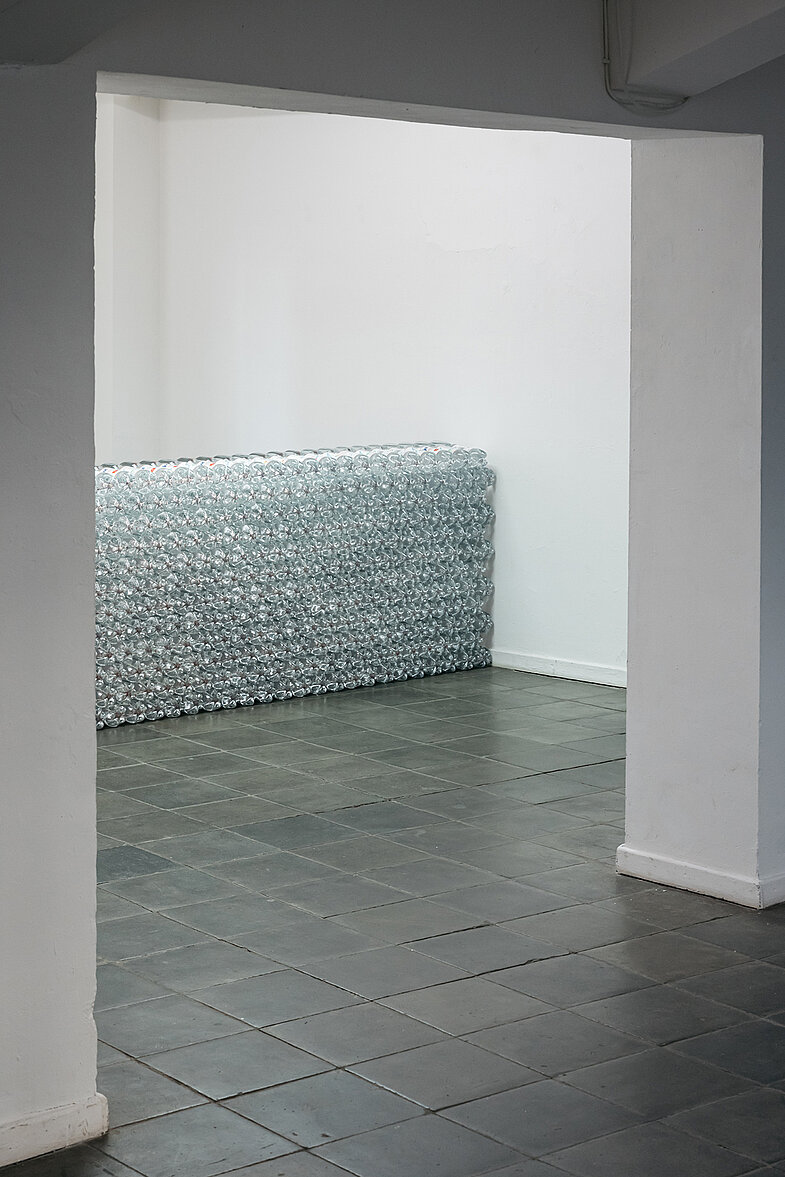
Helmut Smits has designed a new large-scale installation for the exhibition, made of translucent PET bottles that reflect the light. The clear aesthetics, the sterile, sealed, piled-up water, can be read on many different levels. A delicately sparkling snowball made of white Carrara marble lies in the exhibition, looking like a relic from long-forgotten times in a natural history museum under its glass cover. Perhaps it is the last of its kind.
His works often appear cheerful and playful at first glance but only reveal themselves to be very subtle socially critical observations on closer inspection.
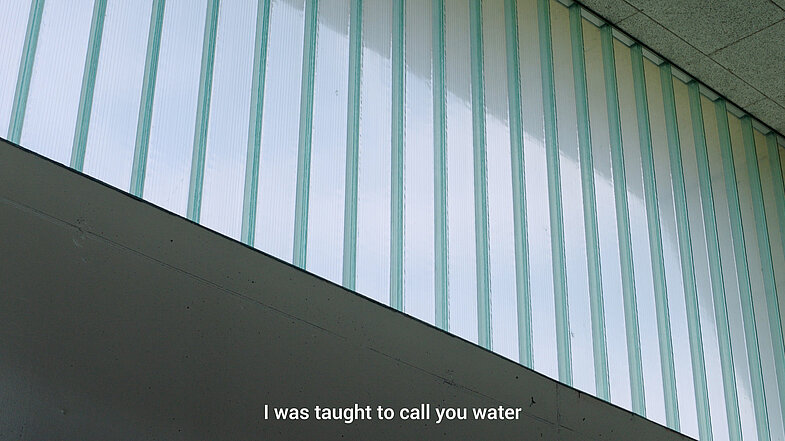
In Once we were river Maud van den Beuken (NL/DE) intimately portrays the interior of a water pumping station located in the East of the Delta landscape of the Netherlands. Guided by a voice-over, you become an active participant in the intertwined relation between land and water.
Dikes, pumping stations, locks, dams and floodplains are landscape interventions to keep water in intended locations. The film tries to give space to the polyphony within the landscape, finding out how different entities carry a plurality of agencies.
Maud van den Beuken has been working with experts in the field of water management for the past 8 years, questioning the definitions of the river in relation to cartography. She reflects on the binary understanding of water and land, of rationality and subjectivity, and wonders how a Western society can think and act from entanglements, rather than differences. This work was commissioned by the IJsselbiennale. Produced with the generous support of the Jan van Eyck Academy, Vroman Foundation and Waterschap Vallei & Veluwe.
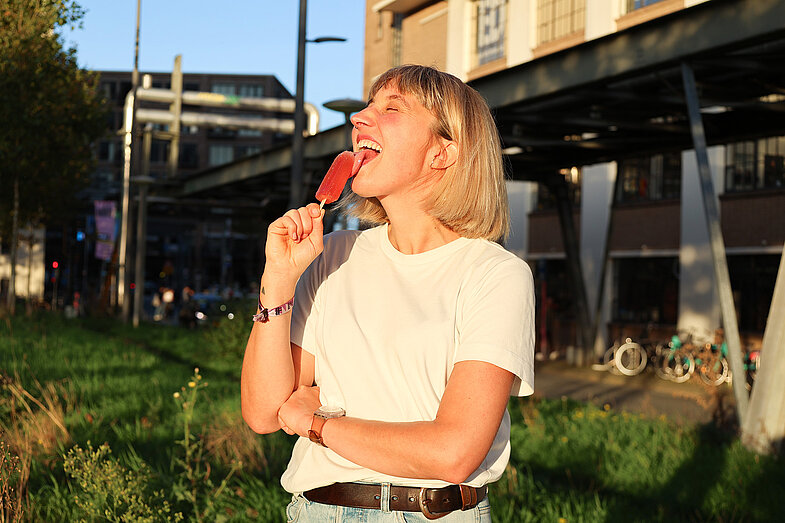
The hotter it gets, the faster ice melts – whether it’s the ice-on-a-stick on a summer day or the polar ice caps. But the result isn’t the same: one leaves you with sticky fingers; the other flows into the sea. Rising sea levels lead to disappearing coastal areas, slowing ocean currents, and the loss of habitats. Action is needed. But how do we break the ice on a crisis that feels too huge to solve?
The Ice Shop takes inspiration from geo-engineering, applying a scientifically sound – yet utterly absurd – method to re-freeze rising sea levels. As you lick a piece of frozen sea level rise, you’re invited to question whether such “solutions” bring us any closer to solving the real problem. Instead of trying to refreeze the sea, shouldn’t we focus on freezing emissions instead?
This playful yet thought-provoking approach is characteristic of Witteman, who blends a design background with a master’s degree in Environmental Technology.
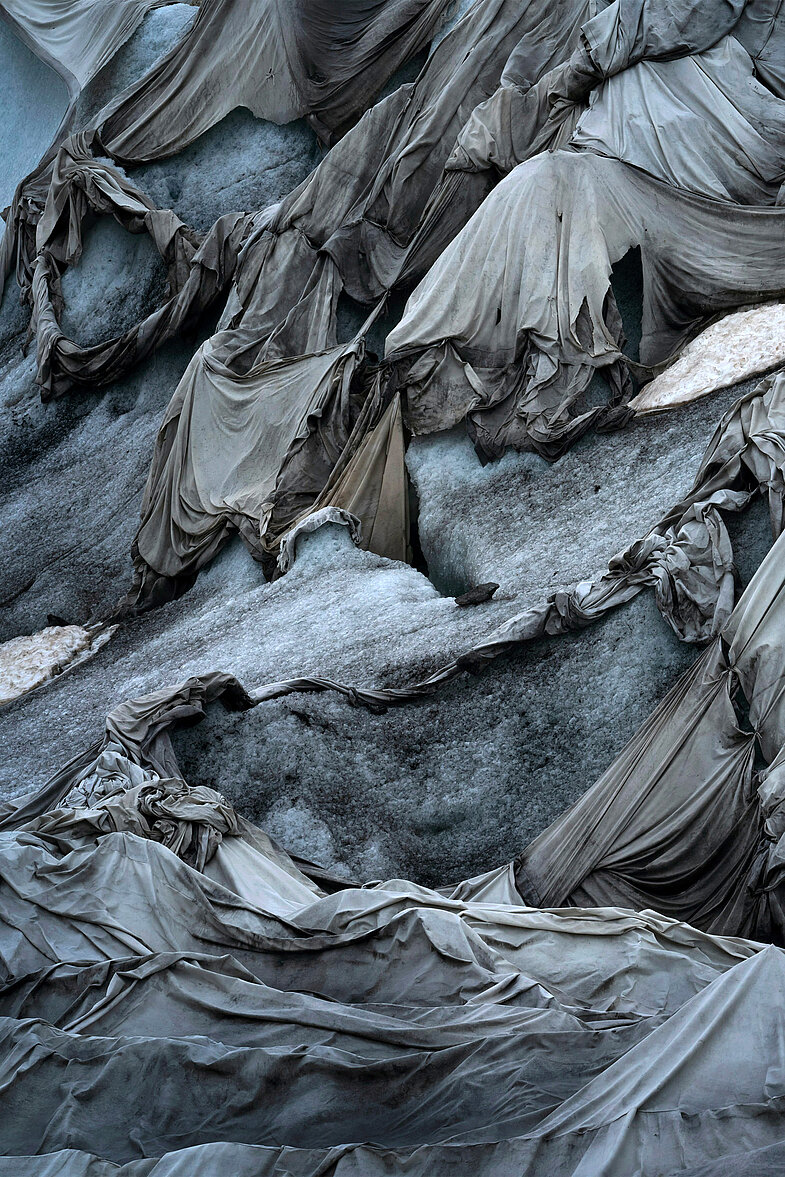
The power of Thomas Wrede's unique glacier photographs ‘White was snow’ unfolds in an almost unbearable tension between dystopia and fragile, clinking beauty. The images presented here were taken at the covered ice cave of the Swiss Rhone Glacier. They are part of a series of works showing outside and inside views of the ice cave.
The plastic fleece foils in these pictures, as a last attempt to stop the glacier melting, are reminiscent of the accurately worked out draperies in paintings by old masters and create a disturbing, wonderful aesthetic. Attracted by so much beauty, the drop in Thomas Wrede's photographs is enormous, as the subject is an almost unstoppable catastrophe, climate change and reality.
Thomas Wrede is Professor of Photography at the HBK Essen. His works can be found in renowned collections worldwide.
5 April - 18 May 2025
Preview / Curator's tour
Friday, 4 April, 5.30 pm
Opening
Friday, 4 April, 7 pm
Performance, 8 pm
Alfredo Ardia
Artists:
Alfredo Ardia
Willem de Haan
Krzysztof Gruse
Jaap Scheeren
Maartje Slijpen
Helmut Smits
Maud van den Beuken
Merel Witteman
Thomas Wrede
Curator:
Janna Banning
Title graphic: Maartje & Merel
Images works: © the artists
Images opening: © Daniel Sadrowski
Curator's tour
Saturday, 3 May, 5 pm
Finissage & Curator's tour
Sunday, 18 May, 4 pm
Kindly supported by:
Kulturbüro Dortmund, DEW21, Bezirksregierung Arnsberg
Wassereis und Farbe
Workshop for kids and teens
10 and 11 May, 10 am - 2 pm